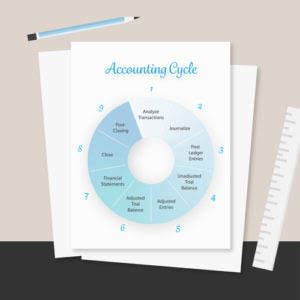T-Account: Definition, Example, Recording, and Benefits

One account will get a debit entry, while the second will get a credit entry to record each transaction that occurs. Thus, the T-account is used for the set of financial records that use double-entry bookkeeping. retained earnings The accounts have the letter T format and are thus referred to as the T accounts.

Would you prefer to work with a financial professional remotely or in-person?

It is called the T-account because bookkeeping entries are shown in a way https://www.bookstime.com/ that resembles the shape of the alphabet T. It depicts credits graphically on the right side and debits on the left side. Each example of the T-account states the topic, the relevant reasons, and additional comments as needed. Since so many transactions are posted at once, it can be difficult post them all.

T Account Examples

The debit entry of an asset account translates to an increase to the account, while the right side of the asset T-account represents a decrease to the account. This means that a business that receives cash, for example, will debit the asset account, but will credit the account if it pays out cash. That’s because we increased our rent expense for the amount of the rent. In turn, by paying the rent, we also decreased the amount of cash available in the bank. While we only completed one transaction (paying the rent), two accounts were affected.
Debtors (or Receivables) Ledger
The debits are always transferred to the left side and the credits are always transferred to the right side of T-accounts. A T-account is an informal term for a set of financial records that uses double-entry bookkeeping. The title of the account is then entered just above the top horizontal line, while underneath debits are listed on the left and credits are recorded on the right, separated by the vertical line of the letter T. T-accounts can be a useful resource for bookkeeping and accounting novices, helping them understand debits, credits, and double-entry accounting principles.
- Each general journal entry lists the date, the account title(s) to be debited and the corresponding amount(s) followed by the account title(s) to be credited and the corresponding amount(s).
- Both these balances can be determined by a quick examination of the T-account.
- On the other hand, the Notes Payable account is expected to be debited since it is a liability account.
- Alternatively, many accounting software packages allow users to enter accounts they wish to track and automatically generate a T-Account.
- They are useful communication devices to discuss, illustrate, and think about the impact of transactions.
The typical accounts include accounts of assets, liabilities, shareholders’ equity, revenues, and expenses, etc. For different accounts, debits and credits may translate to increases or decreases, but the debit side must always lie to the left of the T outline and the credit entries must be recorded on the right side. The major components of the balance sheet—assets, liabilities and shareholders’ equity (SE)—can be reflected in a T-account after any financial transaction occurs. A single entry system of accounting does not provide enough information to be represented by the visual structure a T account offers. As you can see, all of the journal entries are posted to their respective T-accounts.

Fact Checked
Sales are reported in the accounting period in which title to the merchandise was transferred from the seller to the buyer. If you’re ready to automate the entire accounting process for your small business, be sure to check out The Ascent’s accounting software reviews. T-accounts can be extremely useful for those struggling to understand accounting principles.
- For instance, prior to processing closing entries, you can create a revenue T-account in order to check for accuracy.
- The purpose of journalizing is to record the change in the accounting equation caused by a business event.
- With Deskera you can effortlessly manage and oversee your invoices, credit notes, business expenses, financial reports all in one place.
- Debits are always posted on the left side of the t account while credits are always posted on the right side.
When Cash Is Debited and Credited
Splitting out debits and credits makes it easier to quickly spot things when looking at the ledger. In double-entry bookkeeping, every transaction affects two accounts at the same time (hence the word double). One of these accounts is always debited, while the other always credited. This transaction will decrease ABC’s Cash account by $5,000, and t accounts its liability Notes Payable account will also decrease by $5,000.
